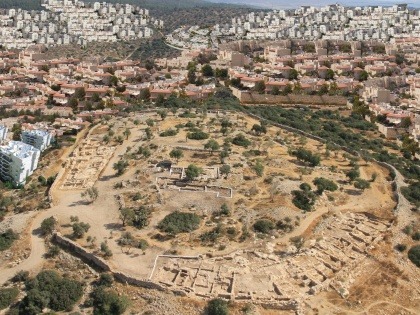Post Author: Bill Pratt
The earliest existing painting portraying a biblical scene was found in a building called the House of the Physician in the ruins of the city of Pompeii, a city destroyed in AD 79 by Mount Vesuvius. The painting is a striking rendition of the scene from 1 Kings 3 where two women lay claim to the same child and Solomon wisely determines who is the real mother of the child.
According to art expert Theodore Feder, this painting was likely commissioned by a non-Jew living in Pompeii in the time period just before the city was destroyed. What makes this painting even more fascinating is that Feder thinks he has discovered the identities of two individuals who are in the bottom left of the painting and who are portrayed admiring the wisdom of Solomon.
In a recent article published in the Biblical Archaeology Review, Feder argues that the two individuals shown admiring Solomon are none other than Socrates and Aristotle, two of the most famous Greek philosophers of antiquity.
I believe these two figures are stand-ins for Socrates and Aristotle, introduced as a way of associating the wisdom of Solomon with that of the Greek philosophers. Put another way, their presence in the composition attests to the respect Greek philosophy could accord to Hebrew wisdom. Such a juxtaposition in art of wise men from the two civilizations was unprecedented, has rarely been done since, and is of great cultural and historical significance.
That Solomon was painted along with Socrates and Aristotle was a testament to the great respect that the Hebrew Bible was afforded as a book of wisdom in the 1st century Roman empire. Feder concludes his article with this statement:
In selecting an episode from the Hebrew Bible, the patron departed from the canon of classical religious subject matter and elevated one from the Scriptures of a people whose influence at the time was spreading throughout the empire and would one day, in its Christian formulation, pervade it.

 We have featured the findings of archaeologist Eilat Mazar in previous blog posts (
We have featured the findings of archaeologist Eilat Mazar in previous blog posts (